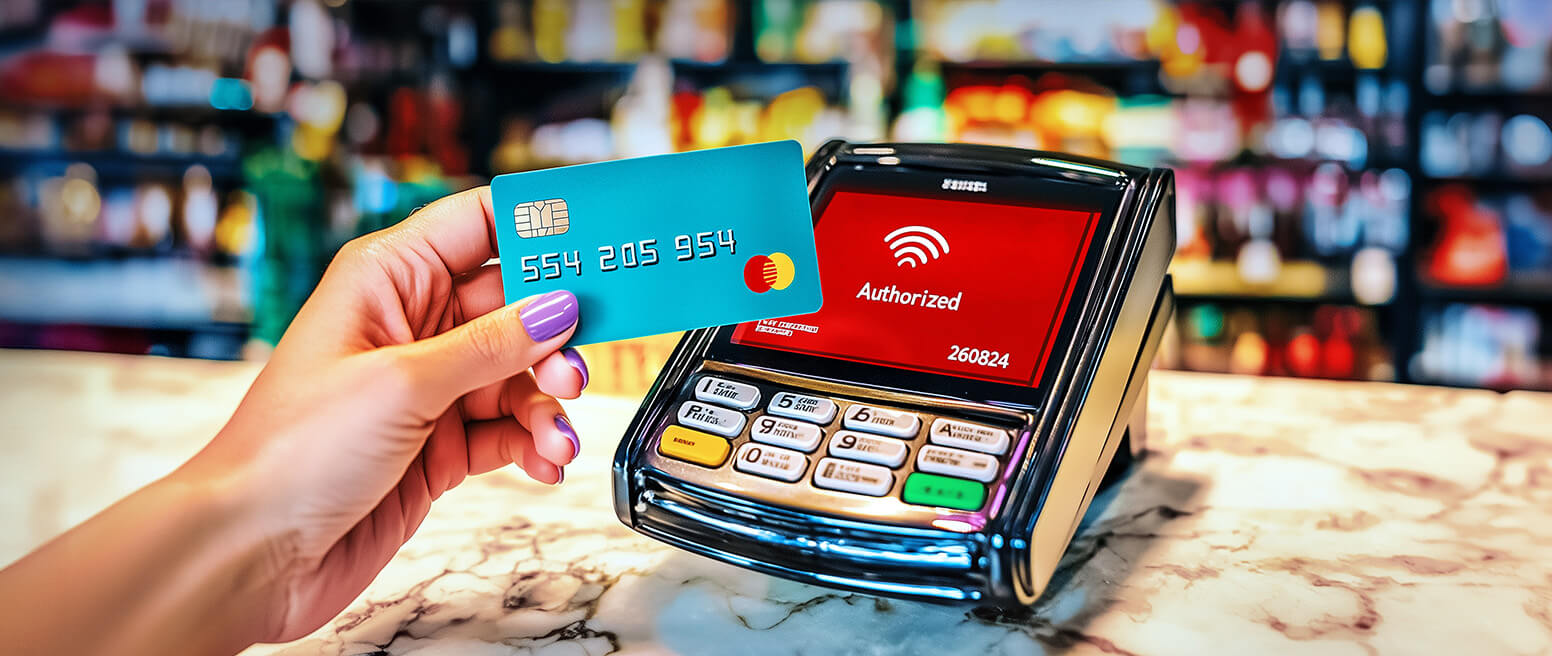Exploring What Causes False Declines, Plus 6 Key Tips to Help You Capture More Sales
Picture this: a customer comes to your site, fills their cart, and submits their payment information at checkout. However, the transaction raises some red flags, and needs to be subjected to some additional screening.
After some investigation and manual review, you’re still unable to verify the purchase. You have the sinking feeling that you’re about to lose out on a good sale… but you simply can’t risk the possibility that it might be a fraudulent purchase. So, you decide to cancel the transaction.
False declines (sometimes called “false positives”) are one of the biggest issues plaguing eCommerce merchants. In fact, the overall cost of false declines is expected to reach $443 billion this year — a number that’s exponentially higher than the actual cost of credit card fraud.
What’s going on here? How can you stop false declines and protect their revenue? Let’s find out.
Recommended reading
- What Are Transaction IDs? How They Help Stop Fraud
- Authorization Holds: What are They & Why Are They Used?
- Credit Card Decline Codes: The Complete List for 2025
- Credit Card Processing Fees: How to Lower Your Rate in 2025
- Credit Card Decline Rate: How to Calculate & Recover Sales
- Do You Know the Credit Card Authorization Codes?
What Are False Declines?
A false decline on a credit card or debit transaction occurs when a legitimate card purchase is rejected by mistake. This may be done by either the merchant or the issuing bank.
At their core, false declines are legitimate transactions that get blocked on the suspicion of fraud without any fraud actually occurring. That is to say, you reject a good customer without a legitimate explanation.
This tends to happen through a combination of data failures in the authentication process. Fraud detection technologies pick up on fraud indicators that either aren’t present, or which suggest something which isn’t happening.
There’s no single answer as to why false declines happen, aside from blanket excuses like “software bugs” and “technical issues.” Therefore, many merchants have started accepting false declines as just another “cost of doing business.” This is a mistake, though.
False declines mean more than losing out on a sale. You also upset potential customers, who will get frustrated that they can’t complete their purchase, and definitely won’t appreciate being accused of something they didn’t do.
Hard declines are the result of a customer’s card-issuing bank rejecting a payment. These typically happen when a card has been reported stolen or lost or has expired. Hard declines should not be retried.
Soft declines happen when a mistake or card read error occurs at the terminal. Most card declines fall into this category. Generally, a soft decline includes an error message, and the transaction can be retried.
What Causes False Declines?
Similar to hard and soft declines, false declines have just two possible sources: the bank or the merchant. On some level, the information is misinterpreted by that entity’s fraud detection software, which flags the transaction as potentially fraudulent– even when it isn’t.
A lot of merchants reject legitimate transactions by accident. Part of the problem is that even the most advanced, dynamic fraud filters still rely on algorithmic decisioning based on common fraud indicators. Some of these include:
Delivery Address
Does the delivery address make sense based on the shopper’s location?
Location
Is the shopper’s geographic location near the billing address on file with the bank?
Cardholder Information
Did the shopper provide accurate and complete information?
Dollar Value
Was the transaction value unusually high, given the products ordered?
Shipping Option
Did the buyer request rush shipping to get the goods as soon as possible?
Velocity
Did the buyer submit numerous similar (or identical) orders in quick succession?
Region/Country
Is the buyer’s address in a part of the world with a reputation for fraud?
Address Mismatch
Does the shipping address provided match the billing address?
For their part, financial institutions depend on a multiplicity of fraud detection systems in order to approve or deny transactions as swiftly as possible. Indeed, with the demand for seamless payments ever increasing, it’s easy to see how there might be issues achieving “real-time approvals.”
Some friction points for banks include:
This is not an exhaustive list of indicators. Fraud filters are complex, drawing on many inputs to try and identify fraud. At the end of the day, though, they’re still automated processes.
Fraud detection demands closer human oversight. Otherwise, the financial impacts could be tremendous.
Financial Impacts of False Declines
Denying legitimate transactions is a bad look for any retailer. It’s also a very costly problem.
Roughly 10% of all eCommerce dollars are rejected by fraud detection systems. And, as many as seven in ten transactions rejected by merchants may be false declines. It can be even worse if you operate in more susceptible verticals like high-end fashion or travel. Businesses in these industries can experience payment decline rates of 20% or even 30%.
Four in ten consumers say that, if a merchant falsely rejects one of their purchases, they will refuse to shop with that merchant again in the future.
The negative effects of false declines include:

A recent study from Unit21 found that decreasing false positives was one of the top priorities cited by risk management professionals in 2022. Not surprising when you consider that, all totaled, the overall cost of false declines comes to $443 billion every year. That's a figure substantially higher than the actual cost of credit card fraud.
Is AI the Cure for False Declines?
False declines are a massive problem. Good news, though: help seems to be on the way.
New advancements in artificial intelligence (AI) are going to play a key role here. Machine-learning technologies can allow you to introduce dynamic routing, for instance. This means you can route transactions to the bank so as to clarify details and improve the odds of authorization. As one example, you can route a cross-border transaction through a processor located in the same country as the buyer.
AI may also let you re-attempt authorization after a decline, by changing the circumstances (time and date, for example) of the payment submission to improve the odds of authorization. Development circles refer to this as "retry logic."
Machine learning can also uncover the best schedule for resubmitting a transaction. It does this by leveraging data from similar submissions that received authorization to find the best solution. This can be especially useful if you’re a subscription merchant.
Your success depends on reducing churn. Any progress on that front will help. Of course, deploying any of these AI-enabled solutions depends on your payment provider and other third-party vendors.
You should look to partner with providers who can leverage these tools to streamline billing, structure payment flows, and both improve authorization rates as well as customer sevice.
Top 6 Tips to Prevent False Declines
Before the ideal solution presents itself, however, there are a few internal steps you can take to manage false declines in your operations in the meantime.
We recommend that you:
#1 | Understand Decline Triggers
The first step is to develop a clear understanding of fraud indicators, as well as the reasons why false declines may happen. The key is to analyze why some transactions get approved, while others are rejected.
#2 | Make Data-Driven Decisions
Don’t reject orders based on generic indicators. Deploy smarter, more advanced fraud filters capable of understanding context more clearly.
#3 | Adopt a Multilayer Strategy
One or two indicators won’t provide enough data. Multiple, complimentary fraud detection tools are needed to provide adequate insight into each purchase.
#4 | Manually Review Orders
Don’t just automatically reject all purchases flagged by a fraud filter. Manually review all questionable transactions to ensure accurate decisioning.
#5 | Reach Out to Customers
Trouble verifying a transaction that was flagged as suspicious? Try reaching out to the buyer directly to confirm the purchase.
#6 | Keep Pace With Technology
Don’t overlook new advances in AI-enabled technology. Fraud is a fast-changing problem; your response needs to evolve just as quickly.
Of course, all these approaches to eliminating false declines on credit card transactions call for significant, in-depth data analysis. You must have access to a broad range of transaction indicators. The more information gleaned, the better. In many cases, it helps to have data that extends beyond just what one merchant can see.
Balancing False Declines & Chargebacks
Managing false declines calls for a delicate balance. Let’s look at chargebacks as a point of comparison.
One of the main chargeback management problems facing merchants is a lack of data insight. Most merchants can’t identify chargeback sources effectively. As a result, they end up deploying fraud detection tools and strategies ineffectively. The result: more false declines, while preventable chargebacks go unaddressed.
Optimizing the balance between false declines and chargebacks is difficult — if not impossible — to accomplish on your own. Manual reviews are time-consuming and expensive. Plus, there’s no guarantee of success.
The key is to partner with the right service provider to help mitigate both problems as part of a broader strategy.
Chargebacks911® offers the industry’s only data-driven, fully managed solution for chargebacks. We combine advanced, proprietary machine learning with human expertise, developing customized strategies to manage chargebacks and fraud.
Prevent chargebacks. Eliminate false positives. Learn more today about how much you could save with Chargebacks911.
FAQs
What are false declines?
A false decline on a credit card or debit transaction refers to a legitimate card purchase that is rejected by mistake. This may be done by either the merchant or the issuing bank.
What causes false declines?
At their core, false declines are legitimate transactions that get blocked on the suspicion of fraud without reasonable cause. That is to say, the seller rejects a good customer without a legitimate explanation. This tends to happen through a combination of data failures that misinform the authentication process, falsely suggesting a cardholder cannot be verified despite all the accurate verification details being present.
What are the types of declines?
When an issuing bank declines a purchase, they may issue either a “soft” or “hard” decline.
What are "hard" versus "soft" declines?
Hard declines are the result of a customer’s card-issuing bank rejecting a payment. These typically happen when a card has been reported stolen or lost or has expired. Hard declines should not be retried.
Soft declines happen when a mistake or card read error occurs at the terminal. Most card declines fall into this category. Generally, a soft decline includes an error message, and the transaction can be retried.
How do you prevent false declines?
Key practices to prevent false declines include understanding decline triggers, making data-driven decisions, adopting a multilayer strategy, manual reviews, and keeping pace with new technological developments.














